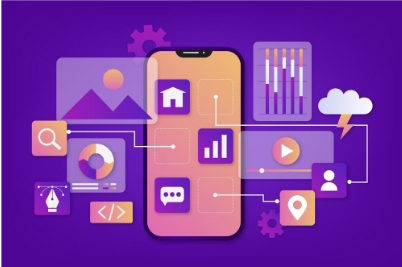Application modernization is the process of enhancing and integrating legacy applications in order to enable them to function in the current IT environment. Over time, due to the ever-increasing rate of change in technology, businesses come to the understanding that their existing systems and applications are a hindrance to productivity and progress. This is essential to update this software to meet the competitive market demands.
When to Modernize Applications
There are several signs that indicate when an application modernization project should begin:
The Application is Outdated
If the software is built using old programming languages, frameworks, or architectural styles, then it hinders your developers in what they can do. New coding languages, modular design, developers from ModLogix, and cloud-native approaches open up significantly more possibilities.
It’s Difficult to Add New Features
Enterprise legacy applications are complex monolithic applications with highly coupled components, even minor modifications are problematic. If your app cannot scale to add more features it is time to redesign it.
You Can’t Hire the Right Talent
Most developers today specialize in modern stacks like JavaScript, Python, Java, etc. If your tech stack is too outdated, you’ll struggle to find qualified staff excited to work on it.
Vendor Support is Ending
When vendors announce they’ll no longer support old OSs, servers, or databases your software relies on, you’ll eventually need to upgrade to continue receiving security patches.
It’s Not Optimized for Mobile
Modern apps need to support multiple platforms. If your software only works on desktop browsers, you’re missing out on providing excellent mobile experiences.
There Are Security Issues
Older languages and platforms can have vulnerabilities that vendors no longer patch. And tightly coupled legacy code makes adding encryption difficult. If your app has security risks, it needs an update.
Why Application Modernization Matters
In a recent survey, 87% of business executives stated that modernization is necessary for a company to expand and succeed. Beyond addressing the issues above, there are compelling reasons to invest in upgrading your apps:
Improve Operational Efficiency
Newer languages, cloud infrastructure, and DevOps processes massively speed up deployment, scaling, and management. You get more agility to respond to business needs.
Enhance Customer Experiences
With support for omnichannel access, mobile compatibility, Web 2.0 features, and personalization, you can satisfy modern user expectations.
Unlock Innovation
Decoupled modular architecture and modern coding languages provide more flexibility for your development teams to build new capabilities.
Reduce Costs
Migrating to cloud platforms and optimizing resource usage can significantly lower IT costs compared to running legacy on-prem infrastructure.
Future-Proof Investments
Get ahead of the innovation curve by leveraging technologies aligned with long-term trends instead of sinking money into soon-to-be obsolete systems.
Approaches to Application Modernization
Now that you know when and why to upgrade apps, what are the available approaches? Here are common modernization strategies:
- Replatform (Lift-and-Shift)
- Redeploy the application to a modern cloud platform like AWS, Azure, or Google Cloud
- Quick to execute, but underlying app code doesn’t change
- Refactor
- Modify the internal software architecture for greater efficiency
- Commonly involves breaking monoliths into microservices
- Rearchitect
- Reimagine the entire technical design to support new capabilities
- Usually, the most complex and expensive option
- Rebuild
- Discard the legacy application and develop a new one from scratch
- Lets you create greenfield apps aligned with business needs
- Replace
- Switch to a commercial off-the-shelf or SaaS alternative application
- Low effort, but you lose full control and customizability
- Retire
- Decommission applications that no longer provide enough value
- Redirect freed resources to more critical modernization needs
The best approach (or combination of approaches) will depend on an application’s business value, technical debt, lifespan, and other factors.
Modernization Best Practices
Application modernization projects carry risks, including potential legacy data loss, business disruption, budget overruns, and rollout delays. Here are best practices to mitigate these issues:
- Prioritize around business goals – Let goals, not technologies, drive your roadmap and guide tradeoff decisions
- Take an iterative approach – Break modernization into smaller chunks to show value faster and incorporate feedback
- Leverage automation – Automated testing, infrastructure provisioning, and deployment streamline efforts
- Manage integrations – Update any dependent systems to ensure continuity of critical linked processes
- Support legacy and new systems during transition – Business can’t afford downtime, so run both in parallel
- Abstract backend from front end – This isolation eases phased user migration to new UIs
- Plan a rollback – Have a contingency to revert to legacy apps in case something goes wrong
- Involve business stakeholders – Include ops, execs, and users in planning to account for real-world needs
- Train staff on new systems – User adoption failures will sink your modernization goals
Key Takeaways
Application modernization is becoming a more critical need, especially when technology transformation redefines sectors more rapidly than before. Although it is a process that can seem rather daunting, due to the fact that it involves replacing outdated systems, the benefits that can be derived from it makes it something that must be embraced. Without doubt, the companies successfully managing to harness modernization as a tool to eliminate operational limitations and bring out rapid innovations will end up reaping big profits.
The proper identification of business contexts, the correct assessment of the right time, and the realistic mapping of transformation strategies are the key to success for such efforts.


